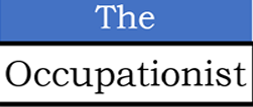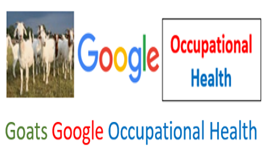Sometime in April 2009, Google brought in a herd of goats to mow the grass instead of using lawnmowers at its Mountain View headquarters in California.
The company said that it wanted to take a more ‘low carbon’ approach with the goats reducing the company’s contribution to air and noise pollution.
Google further said the cost of hiring around 200 goats is about the same price as mowing, but the goats were “a lot cuter to watch.”
While the intent was to contribute to reducing noise and air pollution without affecting the cost, Google unknowingly contributed to employee wellness and happiness by stating that goats were a lot cuter to watch.
When someone is under stress due to work or any other reason, it is so nice to peep out of the window and feel good and de-stressed by seeing the goats who are a lot cuter to watch.
So, Google actually helped, at least some of their employees, de-stress by having goats in the campus, in addition to reducing noise and air pollution.
Occupational Health (OH)has many components – few of them being effect of environment on health and the effect of a company’s operation on employees as well as on local communities. OH also looks into compliance issues regarding health.
By getting the goats to mow the lawns and remove the brush (dry grass), Google did a master stroke of using OH, albeit, unknowingly taking care of employee wellness, environmental health (air and noise pollution), social responsibility (local communities) and compliance of California laws to remove excess brush to reduce any chance of brush fires.
It is another matter that in California, the high rate of brush fires makes it a legal requirement that landowners remove excess brush from their land. The conventional way to do this is, of course, to use noisy lawnmowers that run on gasoline and create air and noise pollution. Google, instead decided to employ 200 goats from a unique company called California Grazing to do what they do best: eat brush, said Dan Hoffman, Director Real Estate and Workplace Services.
The wellness of goats was also taken care of. Niki Fenwick, a Google representative said, ‘Google takes wellness of our employees seriously and we pride ourselves on having a responsive and adaptable culture. The goats are not, of course, full-time Google employees – but we would certainly respond directly to any concerns about their treatment. I can confirm that during their time in Mountain View, like other Google employees, each goat is entitled to a free organic lunch.’
Not to be outdone, rival company Yahoo tweeted at Google saying, ‘they like our grass too.’ with a link of goats grazing on Yahoo properties in Sunnyvale. ‘We have a special fondness for goats and are always sad to see them go – which, based on their voracity, happens much faster than you’d imagine.’
It is interesting how companies can be innovative and in one master stroke sometimes achieve a lot, just as what Google did in April 2009, even if it was unknowingly.
Google perhaps did it to reduce noise and air pollution but unknowingly contributed to employee wellness by themselves admitting that the goats were ‘a lot cuter to watch.’
Similarly, many companies have a fish tank in their offices or a small garden or a cozy sit out – these are good for employee health. It is another matter that most companies do it for the sake of making the office look attractive. Usually, such initiatives are done by the companies out of their own accord and often not knowing that it is contributing to employee wellness.
That’s the power of OH – it is omnipresent and small changes usually bring about big changes.
For a talk in Occupational Health contact
_________________________________________________________________________________________________________
Dr Ajay Sati is an Occupational Health physician who prefers to describe himself as an Occupationist, to denote, ‘an expert in diseases and other concerns of occupations’. Dr Sati has managed health and wellness programs in industries he worked, like the atomic energy, and energy (oil & gas) in India and overseas. He was involved in many greenfield and brownfield projects providing inputs from health point of view. Known for SOPs and protocols, he is currently involved with an energy MNC in designing protocols to support employees during the covid pandemic, and protocols to safely reopen offices and plants.



